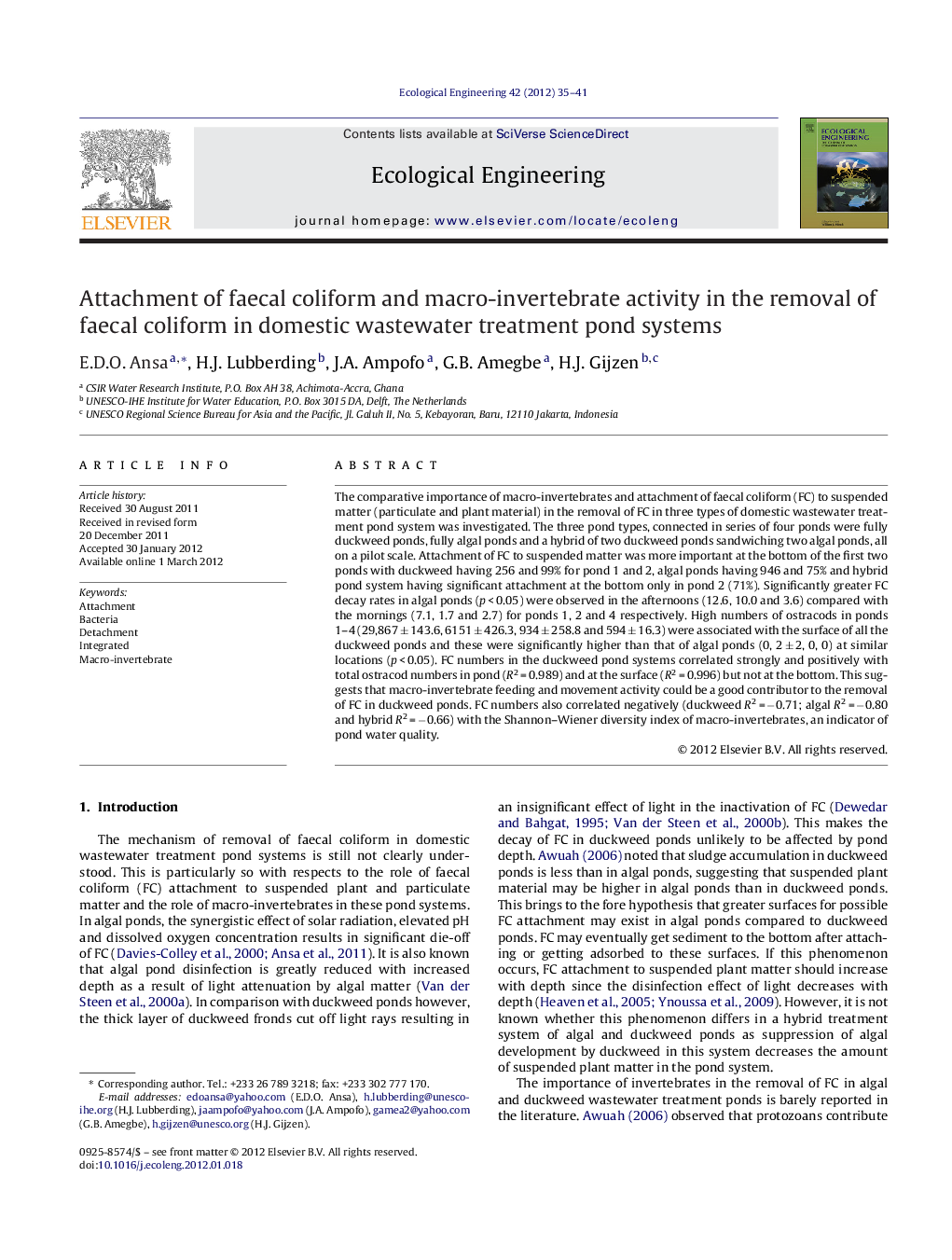| Article ID | Journal | Published Year | Pages | File Type |
|---|---|---|---|---|
| 6302745 | Ecological Engineering | 2012 | 7 Pages |
The comparative importance of macro-invertebrates and attachment of faecal coliform (FC) to suspended matter (particulate and plant material) in the removal of FC in three types of domestic wastewater treatment pond system was investigated. The three pond types, connected in series of four ponds were fully duckweed ponds, fully algal ponds and a hybrid of two duckweed ponds sandwiching two algal ponds, all on a pilot scale. Attachment of FC to suspended matter was more important at the bottom of the first two ponds with duckweed having 256 and 99% for pond 1 and 2, algal ponds having 946 and 75% and hybrid pond system having significant attachment at the bottom only in pond 2 (71%). Significantly greater FC decay rates in algal ponds (p < 0.05) were observed in the afternoons (12.6, 10.0 and 3.6) compared with the mornings (7.1, 1.7 and 2.7) for ponds 1, 2 and 4 respectively. High numbers of ostracods in ponds 1-4 (29,867 ± 143.6, 6151 ± 426.3, 934 ± 258.8 and 594 ± 16.3) were associated with the surface of all the duckweed ponds and these were significantly higher than that of algal ponds (0, 2 ± 2, 0, 0) at similar locations (p < 0.05). FC numbers in the duckweed pond systems correlated strongly and positively with total ostracod numbers in pond (R2 = 0.989) and at the surface (R2 = 0.996) but not at the bottom. This suggests that macro-invertebrate feeding and movement activity could be a good contributor to the removal of FC in duckweed ponds. FC numbers also correlated negatively (duckweed R2 = â0.71; algal R2 = â0.80 and hybrid R2 = â0.66) with the Shannon-Wiener diversity index of macro-invertebrates, an indicator of pond water quality.
